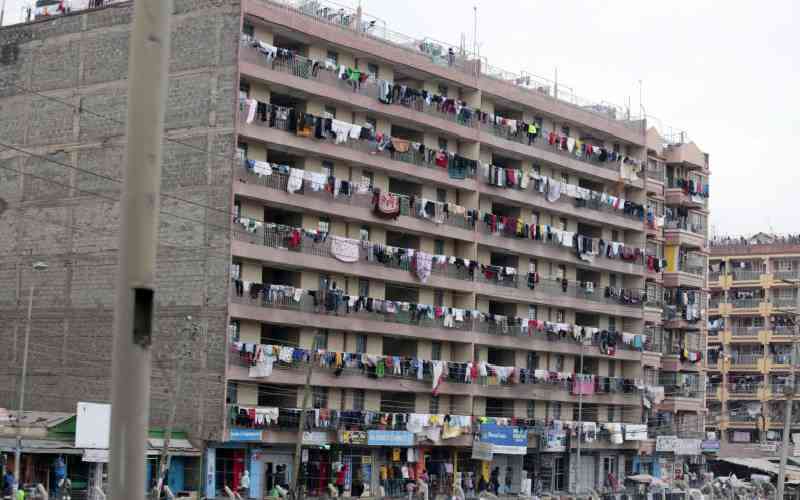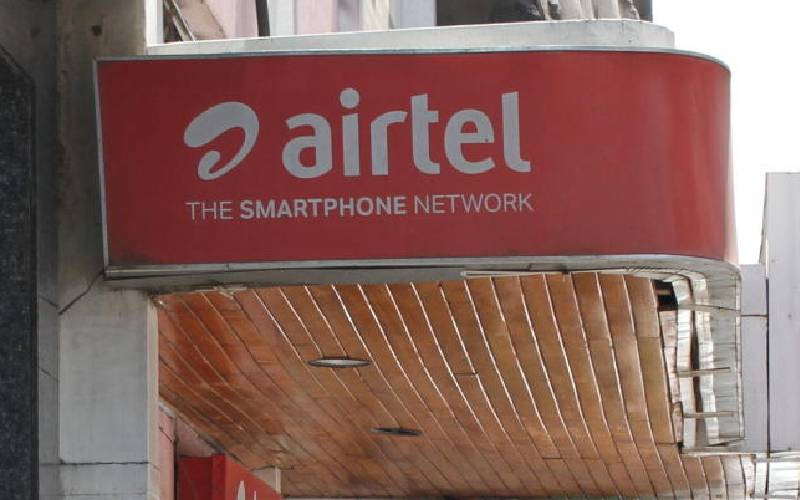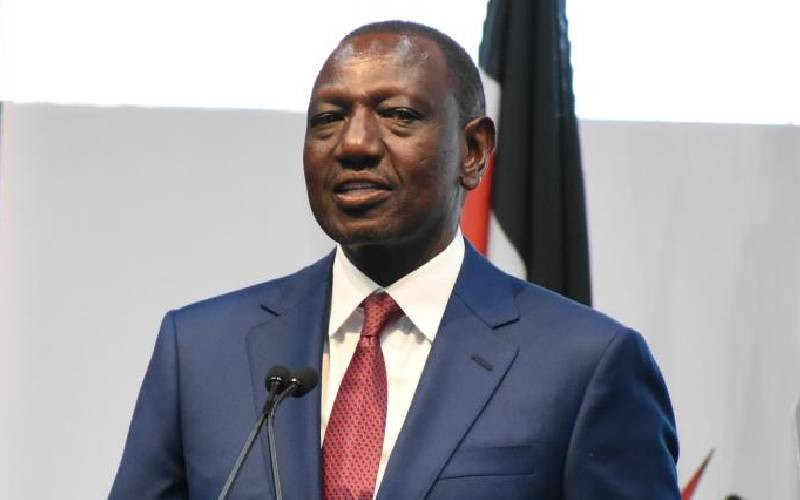By Joe Kiarie and Kenfrey Kiberenge
When the Kibera-Soweto slum upgrading pilot project was launched on World Habitat Day in 2004, it seemed like far away dream.
But about 1, 500 families from the largest slum in Africa, will in the next two weeks move to modern stone houses as part of the Kenya Slum Upgrading Project.
The construction of 17 blocks of five-storey high flats totalling 600 three-room units is complete and residents of Kibera’s Soweto-East village would be the first to move. Once they are moved, the shanties they live in will be demolished and new modern houses built.
But a crisis is looming as the relocation date nears. While some tenants have packed their belongings in readiness for the exit, the landlords in the village have ganged up with some tenants and vowed to oppose the move.
 |
Soweto village in Kibera. [PHOTO ANN KAMONI/STANDARD] |
The landlords are bitter because they are about to lose property that has been their source of livelihood for decades. They therefore want compensation.
Tenants opposed to the move say they cannot afford Sh1, 000 monthly rent for the new housing units –– besides many other reasons. The Standard on Sunday visited Kibera to for insight into the divisive issue.
The journey to the realisation of low-cost houses in Kibera, and the envisaged eradication of slums, has been long and bumpy. And it appears far from over.
The Government estimates a staggering Sh880 billion will be needed to eradicate slums and informal settlements.
However, Housing Minister Soita Shitanda has been quoted as saying the Government does not have the money.
The initiative to eradicate slums was mooted in 2000 as the Kenya Slum Upgrading Programme (Kensup) through an agreement between the Government and UN-Habitat. After a detailed situation analysis in 2001, a pilot project began at Soweto village –– with 60,000 people –– in the southeastern sector of Kibera.
Birth of the plan
The agreement was renewed in January 2003 and the slum upgrading initiative kicked off in earnest. The Kibera-Soweto pilot project was launched on World Habitat Day in 2004, with a graphic media presentation of the planned redevelopment of the slum into orderly flats. The Housing ministry says Kensup is a core programme aimed at addressing housing problems affecting the majority of the urban population who live in slums and informal settlements. Statistics show 60 per cent of Kenya’s urban dwellers live in slums.
Provision of housing those in informal settlements and slums is one of the Millennium Development Goals, specifically Goal No 7. The target is to improve lives of 100 million slum dwellers by the year 2020.
To make the initiative successful, the Government sets up a Settlement Executive Committee (SEC), mainly comprising slum dwellers. Its main role is to act as a link between the programme implementation unit and settlement community.  |
The mud structures (in the foreground) will be replaced by the new housing units (in the background) in Kibera under the Kenya Slum Upgrading Project (Kensup). [PHOTO: BONIFACE OKENDO/STANDARD] |
The SEC is expected to facilitate community networks, co-operatives, and resource mobilisation processes such as savings and credit schemes among others. It is the forum for advocacy for community rights and ideally ensures participation in decision-making.
Reason for stalling
Walter Hongo, a member of Soweto SEC says residents who do not want to move from the slums were not part of the initial plan that started in 2003. He says the dwellers have teamed up with landlords who have been making huge profits from houses constructed on Government land.
"We divided Soweto East into four zones: A, B, C and D and gave each tenant a number and an identification card. Those in Zone A are the first to move. There are many people who moved in after the cards had been issued and these are the ones saying they won’t go because they do not have units at the site," Hongo says.
He says beneficiaries will allocated between one and three rooms in the site. Each room will cost Sh1,000 according to the initial plan. Hongo says the movement of tenants has been put off since President Kibaki and Prime Minister Raila Odinga have been, due to official engagements, unable to attend the first event.
Once the tenants are moved to the site, the Government will pull down their current structures and build permanet houses within two and half years.
"The people at the site will return to new houses but pay for them by installments. Most have already formed cooperative societies and their savings are impressive," says Hongo.
The Lang’ata decanting site was identified as a suitable holding ground.
The site is located at across the slum settlement adjacent to the village. It measures two hectares. Construction of 17 blocks of five storey high flats totalling 600 three room self-combined units has now been completed, months after the initial November 2007 deadline. In addition, a 4.26km spine road and associated infrastructure are under construction parallel to the railway line across Kibera. The proposed physical infrastructure on the spine road includes roads and walkways, storm water drainage among others.
 The Standard Group Plc is a multi-media organization with investments in media
platforms spanning newspaper print operations, television, radio broadcasting,
digital and online services. The Standard Group is recognized as a leading
multi-media house in Kenya with a key influence in matters of national and
international interest.
The Standard Group Plc is a multi-media organization with investments in media
platforms spanning newspaper print operations, television, radio broadcasting,
digital and online services. The Standard Group is recognized as a leading
multi-media house in Kenya with a key influence in matters of national and
international interest.
 The Standard Group Plc is a multi-media organization with investments in media
platforms spanning newspaper print operations, television, radio broadcasting,
digital and online services. The Standard Group is recognized as a leading
multi-media house in Kenya with a key influence in matters of national and
international interest.
The Standard Group Plc is a multi-media organization with investments in media
platforms spanning newspaper print operations, television, radio broadcasting,
digital and online services. The Standard Group is recognized as a leading
multi-media house in Kenya with a key influence in matters of national and
international interest.











